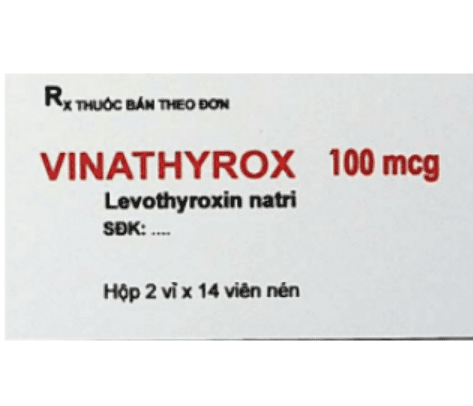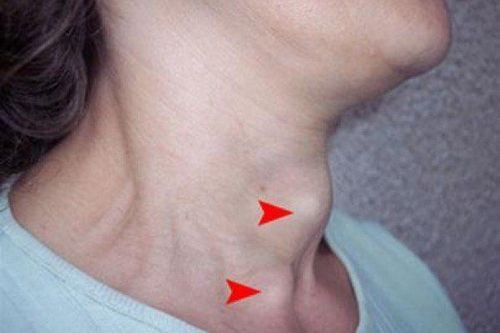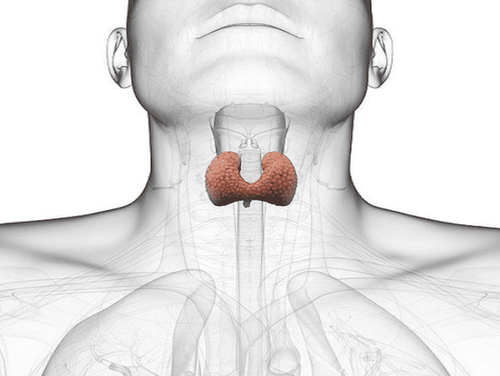This is an automatically translated article.
Article written by resident doctor Trinh Ngoc Anh - Endocrinologist - Department of General Internal Medicine - Vinmec Times City International Hospital
Multinodular goiter is common in women and currently the disease tends to increase and younger. Understanding the condition of the disease will help you provide appropriate treatment and minimize complications that seriously affect your health.
1. What is toxic multinodular goiter?
Toxic multinodular goiter is a condition in which the thyroid gland has many self-functioning nodules in addition to the healthy thyroid tissue, leading to an increase in thyroid hormone secretion.
The disease usually occurs in older women, accounting for 90-95% of cases and is most common in people aged 60-70 years old, with a history of multinodular goiter and familial nature.
After Graves' disease, toxic multinodular goiter is one of the common causes of hyperthyroidism. This type of hyperthyroidism is quite common in elderly patients. An investigation of 17 centers in 6 European countries showed that 14.5% of toxic multinodular goiter in 850 cases of hyperthyroidism.
2. How does a toxic multinodular goiter present?
The patient himself knew he had a goiter many years before (average ten years) but there were no symptoms of compression, no pain, so he often did not go for regular check-ups.
Due to long standing, thyroid gland is often very large, palpable can have many nodules with heterogeneous structure. In many cases, this condition causes difficulty breathing and swallowing.
2.2. Symptoms of thyrotoxicosis Signs of increased metabolism
The patient is often very thin, can lose weight from 20 to 30 kg, this weight loss usually occurs slowly over a period of time, making the patient less attentive at first. However, the appetite did not change. Expression of fear of heat and increased sweating are often mistaken for signs of menopausal hot flashes in women. Cardiovascular manifestations: palpitations, dyspnea on exertion, tachycardia even at rest. Arrhythmias: common with atrial fibrillation or episodes of tachycardia with heart failure, these arrhythmias aggravate symptoms of palpitations and dyspnea on exertion. Neuropsychiatric manifestations: the patient is often easily excited, emotional and feels a lot of shaking hands, insomnia. Muscular manifestations: decreased muscle strength, especially in the proximal extremities, with generalized fatigue. Gastrointestinal disorders: diarrhea is more common than constipation. Genitourinary disorders: decreased libido in both sexes. In women, there may be oligomenorrhea that can easily be mistaken for perimenopause in women near the age of 50.

Bệnh bướu giáp đa nhân độc gây tình trạng sút cân ở người bệnh
2.3. Negative symptoms These are uncommon manifestations in toxic multinodular goiter, thereby helping to distinguish from autoimmune hyperthyroidism such as Graves' disease or thyroiditis. There were never any ocular signs, there was no protrusion or retraction of the eyelid muscles, eyelid edema, and no anterior tibial myxedema
2.4. Severe cases Severe cases patients are hospitalized in the following circumstances:
Heart failure, arrhythmia or myocardial infarction: seen in the elderly, possibly pre-existing ischemic heart disease. It is sometimes an episode of tachycardia or acute heart failure that helps detect hyperthyroidism. Osteoporosis causes broken bones or collapsed vertebrae. Significant neuromuscular damage with systemic effects such as difficulty speaking, swallowing or sudden paralysis of the legs. Neuropsychiatric disorders: psychosis can be seen in elderly patients as the first manifestation of hyperthyroidism Therefore, if you have a large goiter accompanied by symptoms suspicious of hyperthyroidism, you should seek medical attention. Immediately consult an Endocrinologist for early diagnosis and proper treatment.
With the aim of providing the best examination and treatment results for patients, Vinmec International General Hospital has introduced the SPECT/CT Discovery NM/CT 670 Pro system, with the most modern 16-sequence CT technology of Vietnam. The world's leading medical equipment manufacturer GE Healthcare (USA) and examination to produce high-quality images, helping to diagnose early thyroid diseases and hyperthyroidism accurately.
In addition to modern equipment and machinery, the hospital also has a team of experienced Endocrinologists from many major hospitals across the country who will directly participate in the examination and treatment process. for each patient case. Therefore, customers can completely rest assured of service and health at Vinmec.
Please dial HOTLINE for more information or register for an appointment HERE. Download MyVinmec app to make appointments faster and to manage your bookings easily.













